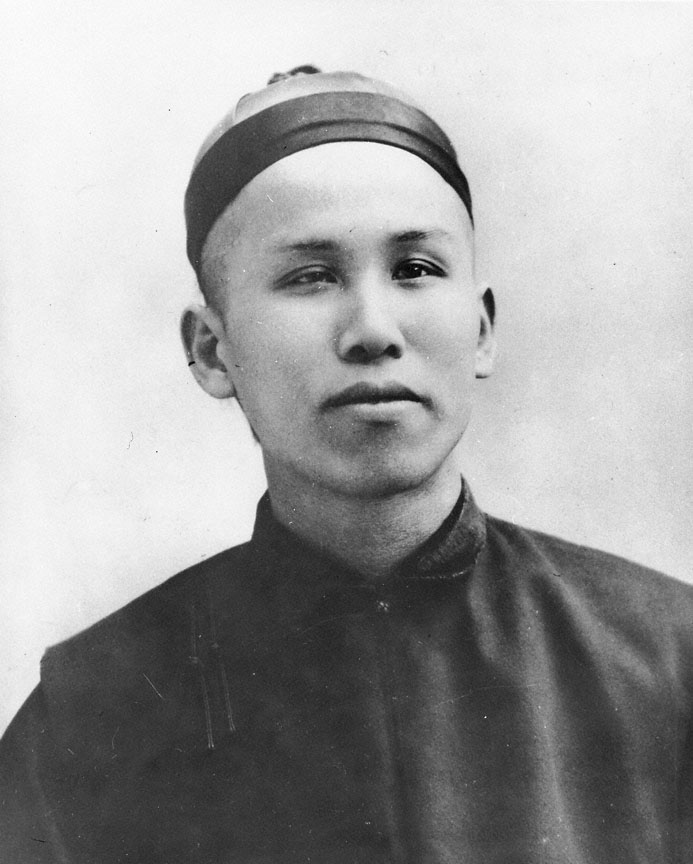- Catalog No. —
- OrHi 26468
- Date —
- circa 1890
- Era —
- 1881-1920 (Industrialization and Progressive Reform)
- Themes —
- Environment and Natural Resources, Race, Ethnicity, and Nationality, Science, Medicine, and Technology
- Credits —
- Oregon Historical Society
- Regions —
- Northeast
- Author —
- Unknown
Ing 'Doc' Hay, c. 1890
This portrait of the Chinese doctor Ing Hay was taken when he was nineteen years old. Doc Hay, as he was best known, was a prominent medical practitioner in the eastern Oregon town of John Day for more than sixty years.
Ing Hay was born in Taishan County, Guangdong Province, in 1862. He came from a long line of herbalists and likely learned traditional Chinese medicine from family members. In the 1870s five of Ing’s uncles emigrated to the United States in search of opportunity. Ing and his father soon followed, probably arriving in the U.S. in 1883, a year after Congress passed the Chinese Exclusion Act.
In 1885 Ing and his father moved to Walla Walla, which had a thriving Chinese community. Ing’s father returned to China in 1887, but Ing remained in the United States. He relocated to John Day, where he became acquainted with a fellow Chinese immigrant by the name of Lung On. Ing Hay and Lung On would become lifelong friends and business partners.
In September 1888, Ing Hay and Lung On opened a store in the Kam Wah Chung building, a stone structure probably built in the late 1860s as a trading post and temporary fort along The Dalles Military Road. Catering primarily to the large Chinese community in John Day, Kam Wah Chung & Co. sold goods imported from China as well as canned food, bulk goods, tobacco, and other items to white miners and residents of John Day. It also served as a social center and hiring hall for eastern Oregon’s Chinese community.
In addition to the general store, Ing Hay practiced traditional Chinese medicine. He specialized in herbalism and pulsology, a technique that measures the pulse to diagnose medical problems. He became widely known for his ability to cure diseases that baffled American-trained doctors, and both whites and Chinese would travel from throughout the region to visit the modest office of the “China doctor.” When the Kam Wah Chung building was reopened in the late 1960s after being boarded up for more than a decade, over 500 herbs and other medicines were discovered, one of the largest collections of traditional Chinese medicine in the United States.
Ing Hay continued to practice medicine until 1948, when he retired to a nursing home in Portland. He died in 1952 at the age of eighty-nine. He is buried in the Restlawn Cemetery in John Day.
Further Reading:
Barlow, Jeffrey G. and Christine Richardson. China Doctor of John Day. Portland, Oreg., 1979.
McCunn, Ruthanne Lum. Chinese American Portraits: Personal Histories, 1828-1988. San Francisco, Calif., 1988.
Written by Cain Allen, © Oregon Historical Society, 2005.
